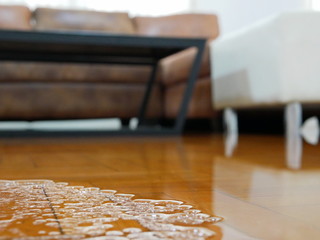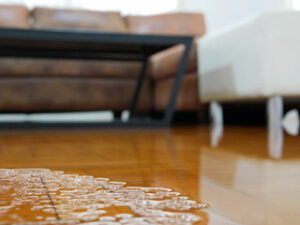Drain Cleaning Aurora CO are something homeowners only think about once they stop working. But regular drain cleaning can prevent clogs and keep them from reoccurring.
Most clogs are caused by hair, food, grease or oil, paper, or grime. Look for a drain cleaner that works on all these clogs.

Chemical drain cleaners work by emulsifying or eating away the organic components of a clog to create a hole through which water can flow. However, they usually only make a small dent in the clog and leave most of the residue on the walls of your pipes, meaning the clog will likely come back sooner or later. Plus, the chemicals in these cleaners are hazardous to your health, especially if they leak or splash onto your skin or eyes. They can also damage your pipes, particularly if you have older, less durable metal ones like cast iron or galvanized steel.
Caustic drain cleaners, which contain bases such as lye and caustic potash, are the most common chemical drain cleaners. They break down organic materials in a clog, creating a reaction that clears the blockage and often releases heat. However, they can damage your pipes if the amount is too high and may erode or discolor them.
Other chemical drain cleaners are oxidizers, which include household bleach, peroxides, and nitrates. These products oxidize the organic material in a clog, breaking it down into smaller pieces that are easier to dissolve. But they can also harm your pipes if the amount is too high or if it comes into contact with other materials in your pipes, such as PVC plastic.
Chemical drain cleaners can also contaminate the environment, causing harm to plants and animals. If they enter waterways, they can affect fish and other wildlife that rely on those waters for survival, contributing to air pollution. Plus, the empty bottles of chemical drain cleaners in landfills can leach into groundwater and contaminate soil.
A plunger is a simple, inexpensive and effective DIY drain cleaning tool that can save you a hefty plumber bill. Its effectiveness relies on the forces of hydraulic suction and compression: when you plunge a sink, toilet or shower, it moves the water in the pipes upward and downward, loosening and breaking up clogs. This push-pull action, when done properly, can clear minor blockages of debris that are too big for the drain snake to handle.
There are several different types of plungers; understanding how each differs can make choosing the best one for your home easier. The standard red rubber plunger you may have seen before is called a cup plunger and is designed for drains with a flat surface.
This type of plunger is perfect for kitchen sinks and shower drains, but can also work for toilets if you’re in a pinch. To plunge a toilet correctly, you need to remove excess water from the bowl so you can create a seal over the drain opening. This helps to prevent splatter and keep your hands clean.
If you’re using a plunger in conjunction with a drain cleaner, never use the two together; doing so can cause the chemicals to splash back up through the drain. This can damage your plumbing pipes and is extremely dangerous to your health.
Always make sure the cup of the plunger is firmly sealed over the drain opening when plunging. A faulty seal can break the plunger’s ability to generate a vacuum and dislodge the clog. It’s also important to remember that a plunger should only be used on small clogs. If you have a major blockage, such as a collapsed sewer pipe or extensive tree root growth, the clog will likely require more than just a plunger to dislodge it.
Homemade cleaning solutions made from baking soda and vinegar can be an inexpensive, natural alternative to store-bought drain cleaners. These common household ingredients can eliminate small clogs and are safe to use on most pipes. However, these natural products cannot break down a severe clog and can damage older, weaker pipes.
When mixed together, baking soda and vinegar produce carbonic acid, which dissolves some materials like soap scum and light grease. The chemical reaction also makes the mixture fizz, which can dislodge a minor clog. When the bubbles disappear, however, the chemical solution is no longer effective. Baking soda and vinegar do not dislodge food scraps, hair, or other tough materials that can clog a sink or garbage disposal.
To clean your drains with baking soda and vinegar, pour a cup of baking soda down the drain followed by a cup of distilled white vinegar. The mixture should fizz and react for a few minutes, after which you should rinse the drain with a pot of boiling water. Repeat this process as needed to keep your kitchen and bathroom drains running smoothly.
Vinegar is also a natural deodorizer and can freshen up your garbage disposal. Pouring a cup of vinegar down your drain can remove unpleasant odors and prevent build-up in the disposal system. It is a good idea to run this cleaning process once a week to prevent unpleasant smells and to help keep your drains and garbage disposal clean.
It’s important to note that the combination of baking soda and vinegar can damage some types of pipes, such as galvanized steel or cast iron. This is because the chemical reaction produces carbon dioxide, which can build up and create pressure in your pipes.
When it comes to cleaning your drains, it’s important to use a formula that can do the job without any harmful chemicals. Most liquid drain cleaners work by creating a chemical reaction inside of your pipes, and while this can do a good job at dissolving clogs, it can also cause a lot of damage to the interior of your pipe. Additionally, many of these cleaners are also dangerous if they get on your skin or in your eyes.
If you’re looking for a safe and effective way to clean your drains, try using a dish soap that is specially formulated to cut through grease and oils. This dish soap will bind to the molecules in grease and oil, breaking them down so that they can be washed away with water. Plus, this dish soap is made with natural ingredients and is free of sulfates, phthalates, and mineral oil. It’s also hypoallergenic and is tested for use on babies and toddlers, making it a great choice for families.
Another great thing about this dish soap is that it can help remove fabric oil stains. Simply rub the soap into the stain, let it sit for a few minutes, and then wash it with hot water. This can be a great way to remove greasy stains from clothing, and it’s a much safer option than trying to use a solvent-based product.
Pour a few tablespoons of this dish soap into your sink for a simple and effective way to clean your kitchen drain. Then, pour a pot of hot water down the drain. This will help clear any lingering grease and grime from the interior of your drain pipes and keep your sink working properly. You can even do this periodically to prevent clogs from occurring in the first place.
Chemical drain cleaners are a quick and easy solution to stubborn clogs. They’re available at most hardware and big box stores and typically contain acidic or caustic chemicals. These cleaners work by creating a chemical reaction with the clog or heating up the pipe. They’re effective at dissolving organic materials like hair or grease, but they can also wreak havoc on pipes with repeated use.
Most chemical cleaners emit toxic fumes that are dangerous to your health. They’re especially hazardous to children and pets who may come into contact with them. The fumes can also irritate your nose, eyes, and throat. Some chemical cleaners can even cause burns if they get on your skin. They can also damage your pipes by generating too much heat or by wearing away at the surfaces of your drain pipes.
In addition to being toxic to people and pets, chemical drain cleaners are harmful to the environment. They can leak into groundwater and pollute the environment. The empty bottles can also contaminate landfills and harm surrounding plants and wildlife.
If you have a stubborn drain clog, try using a plunger or drain snake before resorting to chemical drain cleaners. If these don’t work, call a plumber for professional help. If you’ve used chemical drain cleaners frequently, it’s likely that more serious issues cause your clog. Repeated use of these products can also eat away at your pipes, particularly those made from PVC plastic or older metals. This can result in costly repairs and replacements down the road. To avoid these problems, schedule regular maintenance for your drains and septic system. Contact our plumbing team to learn more and to schedule service.


